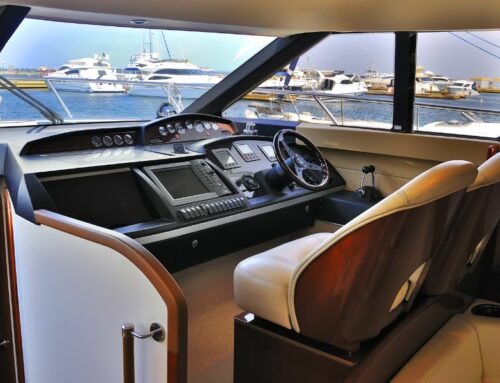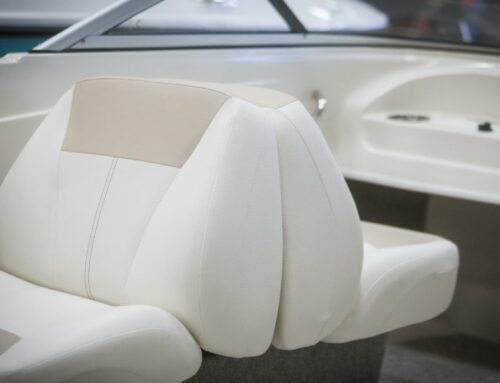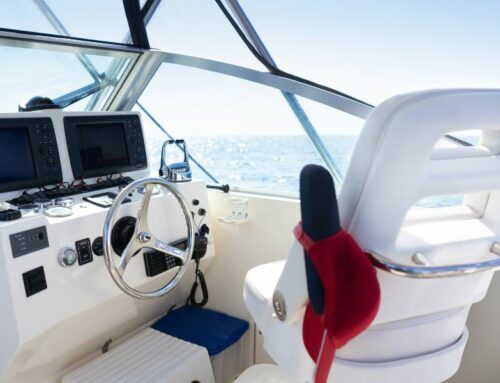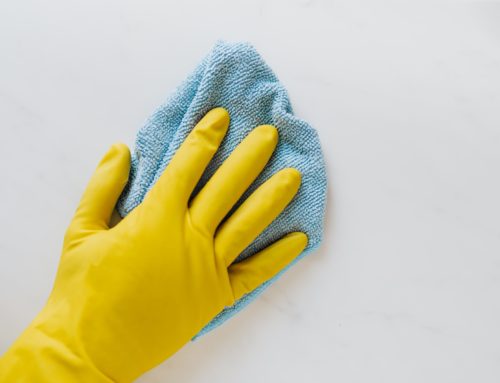The thrill of navigating the open water, the wind in your hair, and the sun on your face—it’s the quintessential boating experience. However, with that experience comes many unique maintenance challenges, particularly when you discover water damage on your boat seats.
Whether you’re skimming across the waves for leisure or angling for the big catch, your boat’s seating provides you and your guests with comfort and safety. While water—a natural component of boating—is a source of great fun, it’s also your greatest enemy when protecting the integrity of your boat seats.
We created this comprehensive guide for boat owners looking to safeguard their investments. Read on to learn how to prevent boat seats from experiencing water damage and the best practices for mitigating its effects.
How To Tell if Your Boat Seats Have Water Damage
Water damage is often difficult to spot right away. It can creep up on you and silently leach away at the structural integrity of your boat’s seating. However, it’s possible for vigilant boat owners to catch the early signs of water damage. Three common signs indicating your boat seats have water damage include:
- The seats feeling squishier than normal
- Smelling a strange odor whenever you sit
- Your seats showing signs of mildew
A simple diagnostic test is to press your palm firmly on the seat and observe if water seeps from the crevices. If it does, then you know that your seat is likely harboring moisture. Additionally, you should look for any hint of discoloration or a spongy texture in the upholstery.
How Long Does Water Damage Last on Boat Seats?
If not treated promptly, water damage can have a lasting impact on your boat seats. After an initial soaking incident, mold and mildew can set in within 24 to 48 hours. If not remediated, these growths can become difficult to remove, increasing the health risks of everyone aboard your boat.
Beyond biological contaminants, water can degrade the fabric, causing it to lose its color and texture over time. More seriously, water damage can cause the seat’s structural components to rust, leading to a permanent breakdown of the integrity that’s essential for safety.
Boat Seat Cracking: A Common Result of Water Damage
One of the most visible and severe consequences of water damage to boat seats is cracks in the upholstery. When water gets into the pores of the material and then evaporates, it leaves behind salt and other minerals that can act as abrasives.
Over time, these trapped pollutants will deteriorate the fabric, leading to unsightly and uncomfortable cracks. You must clean and dry your wet boat seats regularly to prevent such issues. Once cracks form, they become difficult to repair and may require professional help to address.
What’s the Best Way To Clean and Dry Out a Wet Boat Seat?
When you first notice that your boat seats are wet, your best defense is to take immediate action. Remove the seats from your vessel and take them to a dry, well-ventilated area.
For light moisture, simply pat the surface dry with absorbent towels and allow the seat to air out thoroughly. You may need a wet-dry vacuum for a more severe soaking.
Once you remove most of the water, use fans or space heaters to accelerate the drying process. You should complete this process in a well-ventilated area to discourage the growth of mold.
While people online may recommend using ozone generators to kill potential mold spores, we suggest exercising extreme caution. These high-octane air purifiers can cause short-term health problems for children and adults. You should only use this type of equipment in unoccupied, well-sealed environments.
Tips for Protecting Your Boat Seats From Water Damage
Prevention is always better than finding a cure, and this is especially true for water damage on boat seats. Implementing a few simple yet effective measures can significantly increase the lifespan of your boat upholstery.
Regular Inspections
Just as you inspect your boat’s hull and engine, you should also conduct regular checks on your boat seats. With regular inspections, you can catch leaks and standing water before they have a chance to affect your seats.
Proper Storage and Covering
When your boat isn’t in use, store it in a covered area, use a boat cover, or keep it in a dry dock. Keeping your seats out of the elements is the best way to prevent water damage. In the off-season, consider removing the seats and storing them indoors.
Waterproofing
Treat your boat seats with a quality waterproofing solution. This solution will help the seats repel water and protect them from minor splashes and spills. Reapply the waterproofing treatment annually or more often if your boat sees heavy use.
Breakdown of Storms
Take your boat out of the water and secure it during severe weather, especially during heavy rain and windstorms. This proactive step will protect your boat from water damage and keep your entire vessel safe and secure.
Adequate Ventilation
Keep your boat’s interior properly ventilated to prevent moisture build-up. We recommend installing vents or using desiccants to keep the air dry.
How Saltwater Can Damage Your Boat Seats
Saltwater poses specific challenges when it infiltrates your boat seats. Its corrosive nature can accelerate the degradation process. When it dries, it leaves behind a salty residue that can crystallize in the fabric and weaken the material.
Therefore, it’s essential to clean and dry a saltwater-soaked seat as quickly as possible. You should use fresh water when cleaning to prevent crusty salt build-up.
How To Protect Your Boat Seats From Saltwater Damage
Boat owners who spend considerable time in saltwater environments should take additional precautions to prevent damage to their seats. Here are the top steps you should take:
- Rinse your boat seats with fresh water
- Deep clean your boat seats annually
- Use salt neutralizers to break down salt deposits
Should You Purchase Seat Covers for Your Boat Seats?
Seat covers are helpful tools if you know how to use them properly. They offer an extra layer of protection against the elements. However, they can trap moisture if they don’t have adequate ventilation.
The decision to use seat covers comes down to personal preference and your style of boating. If you choose to use seat covers, select ones specifically designed for boat seats and that fit properly to allow for airflow.
By learning how to prevent your boat seats from experiencing water damage, you can keep your vessel in top working condition for many years. Regular maintenance, a good cleaning routine, and the right protective measures will enhance your boat’s aesthetics and contribute to the comfort and safety of all who come aboard.
The advice provided above applies to all types of boat seating, including hydraulic boat seats from Smooth Moves. With our help, you can protect your investment and enjoy your boating experiences without the worry of water damage.









